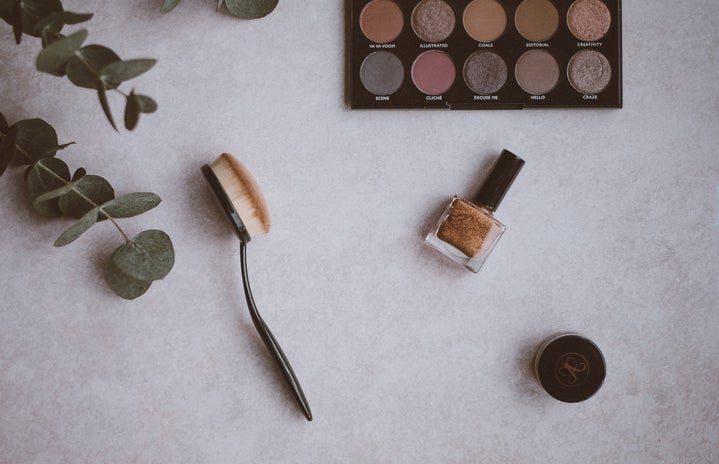I love to make people look like they’ve just got beaten up. It fills me with so much pride when my work with special effects makeup shocks people and they think my makeup is a real injury. I’ve only been practicing special effects makeup for about a year, but I’ve been into glam and natural makeup for about the last seven years. I took a theater class to learn how to do stage makeup, including bruises and wounds. I happened to have a natural ability to make fake wounds look real, and I just rolled with it. I started posting my skills online and I was invited to work on Scares and Scores sets. I’ve worked on a few sets for the University of Miami’s chapter of Delta Kappa Alpha, a gender-inclusive, professional cinematic arts fraternity. Not many people work in the niche I do – I’m one of the only people in this sphere of film making on campus who knows how to do special effects. I often practice on myself because my kit is tailored to my skin tone and I get weird urges to make myself look dead at odd hours of the night. In the particular picture below, I had woken from a dead sleep at 2 a.m. and wanted to know if I could create a bullet hole on myself.
Tools of the Trade
Your kit determines the level of quality you produce. I began my kit with a Ben Nye Theatrical Creme Pro Makeup Kit that I ordered for a class. This is an amazing beginner kit for those looking to dip their toes in the water of the special effects makeup world. The kit contains 3 creme foundations, creme contour wheel, bruise & abrasions wheel, creme highlight, creme shadow, white creme color, powder blush, eyebrow and lip pencils, liquid latex, nose & scar wax, ivory hair color, translucent setting powder, spirit gum adhesive, spirit gum remover, stage blood and three starter brushes. Here is my beginner kit:
I’ve added to my kit over the past year to tailor it to the sets I work on. I mostly work on horror and thriller film sets making wounds and scars. I’ve added rigid collodion, which creates scars without any makeup and tightens the skin. I’ve gone through liters and liters of fake blood, as well as a few containers of liquid latex. I like using powders instead of creme paints because it’s easier to apply with a light hand, although creme color is easier to blend. When creating bruises, I’ll utilize creme color because it looks more natural and sinks into the skin. I often use hairspray instead of the translucent setting powder.
YouTube Gurus for Beginners
Two of my favorite YouTube channels for SFX beginners are Glam and Gore and Emma Pickles. Mykie runs the Glam and Gore account and she gives explicit and detailed instructions on how to create each of her looks. She has done gore basics, as well as a more advanced series including her Disney princess series. I’ve learned almost everything that I know from Mykie. Emma has a lot more advanced videos, but I like to think of them as things to aspire to.
Most Importantly…
Remember is that makeup is art – never let anyone tell you that your work is not good enough. You are always learning and improving your craft. Don’t be ashamed of your progress.
Below are a is an example of ghostly makeup I did for a short film shoot a few weekends ago!
All images are mine, except for the Ben Nye Kit, which comes from http://www.norcostco.com/ben-nye-theatrical-creme-kit.aspx and the header image, which comes from https://s-media-cache-ak0.pinimg.com/originals/9d/1b/af/9d1baf0b09868a03….

